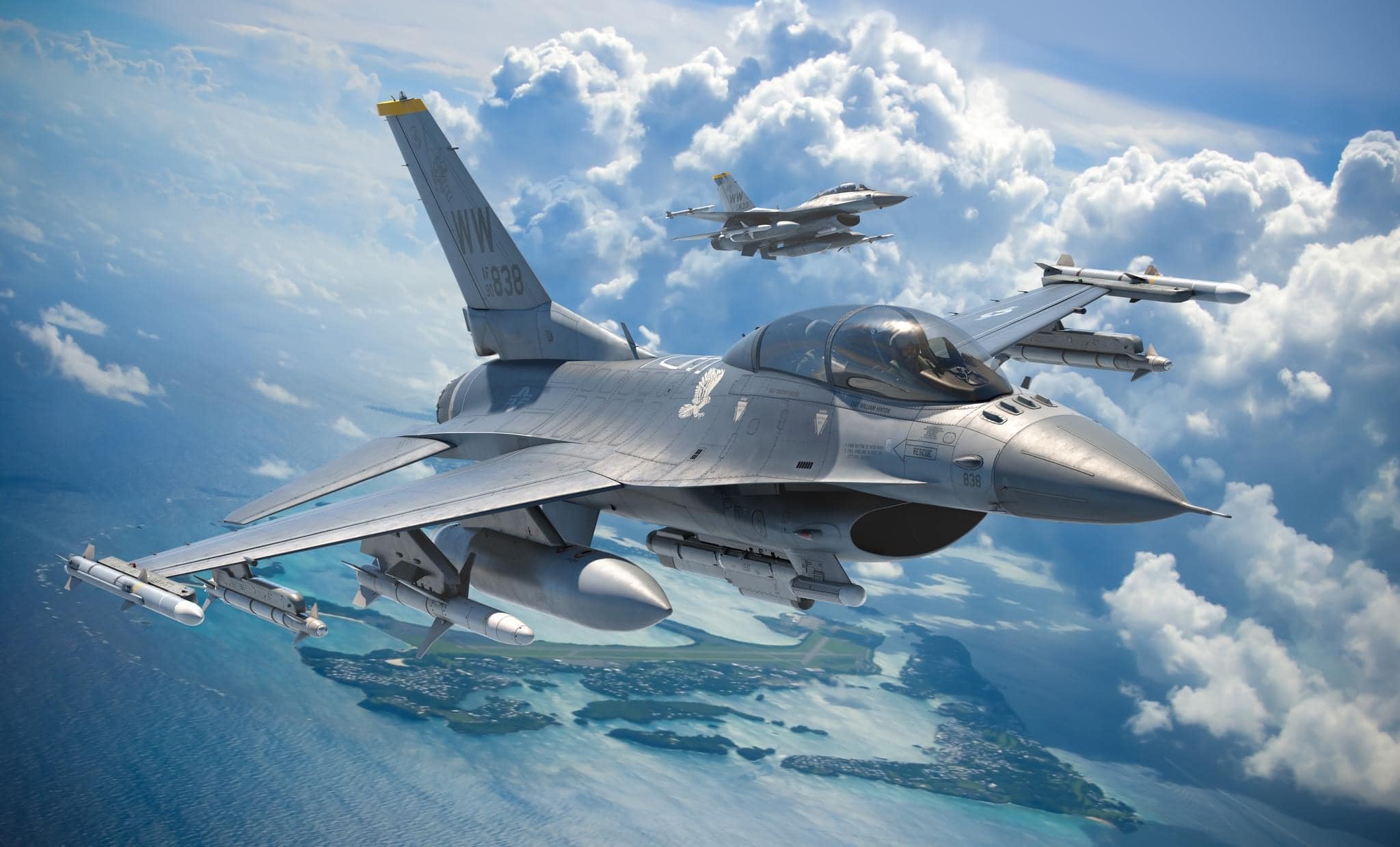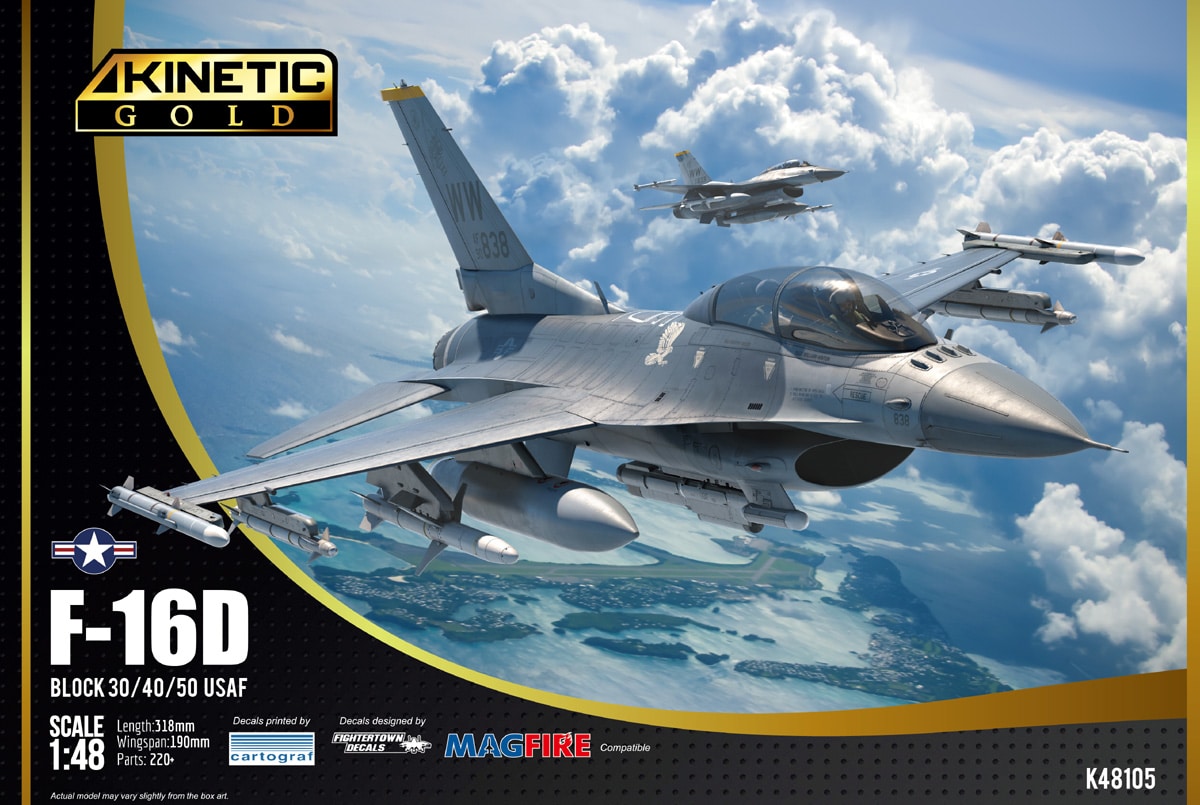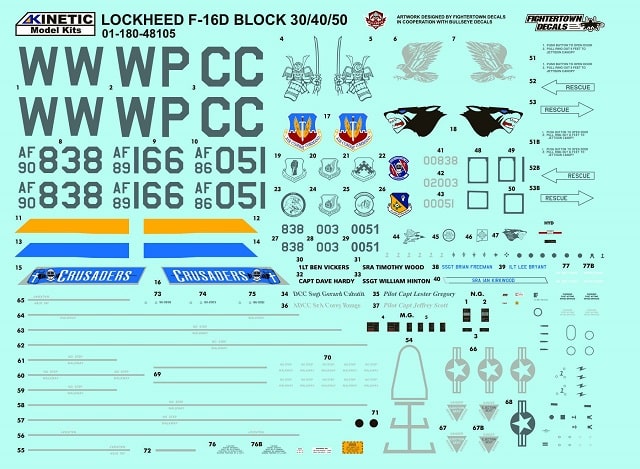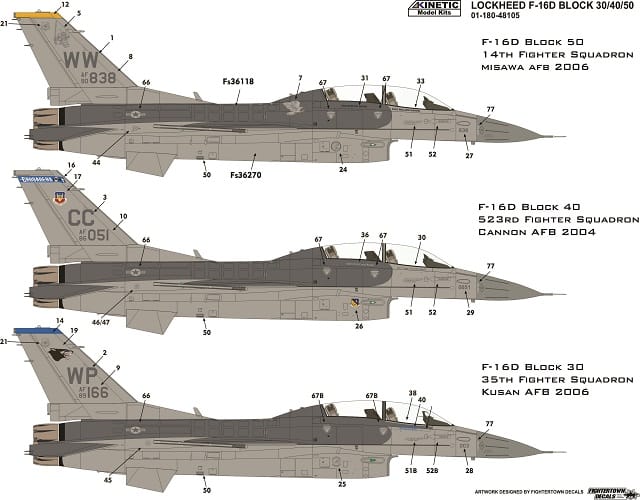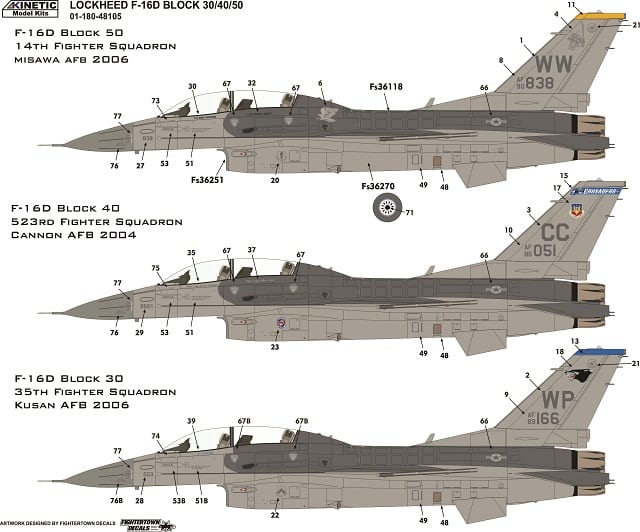Kinetic 1:48 F-16D USAF Block 30/40/50
The Kinetic model’s first release for 2023: Kinetic 1:48 F-16D USAF Block 30/40/50. The all-new Tool, which he describes as the gold series.
1:48 F-16D USAF Block 30/40/50 No. 48105
- Detailed panel lines.
- The correct figure is based on Lockheed Martin’s original Drafts.
- Stickers made by Fightertown and printed by Cartograph.
- Various external shop options with weapons, tanks, and PODs.
- Convenient High Quality.
- BoxArt by Antonis Karydis.
What was the difference between the F-16D USAF Block 30, Block 40, and Block 50?
The F-16D is a two-seat version of the F-16 Fighting Falcon, a supersonic, single-engine, multi-role fighter plane. The F-16D has been produced in some different blocks, each with its own specific features and capabilities.
The F-16D Block 30 was produced from 1984 to 1988 and was used by the United States Air Force (USAF) for air-to-air and air-to-ground missions. It was equipped with the AN/APG-66 radar, which provided improved air-to-air and air-to-ground capabilities. The F-16D Block 30 was also equipped with a 20mm cannon and could carry a variety of missiles, including the AIM-9 Sidewinder and the AIM-7 Sparrow.
The F-16D Block 40 was produced from 1988 to 1994 and was also used by the USAF for air-to-air and air-to-ground missions. It was equipped with the AN/APG-68 radar, which provided improved air-to-air and air-to-ground capabilities, as well as the ability to track many targets. The F-16D Block 40 was also equipped with a 20mm cannon and could carry a variety of missiles, including the AIM-9 Sidewinder and the AIM-7 Sparrow.
The F-16D Block 50 was produced from 1994 to 2005 and was used by the USAF for air-to-air and air-to-ground missions. It was equipped with the AN/APG-69 radar, which provided improved air-to-air and air-to-ground capabilities, as well as the ability to track many targets. The F-16D Block 50 was also equipped with a 20mm cannon and could carry a variety of missiles, including the AIM-9 Sidewinder and the AIM-7 Sparrow.

